Me, A Writer: *considers Myself An Intellectual*
Me, a writer: *considers myself an intellectual*
Also me:

More Posts from Lovespiralls and Others
Words for Skin Tone | How to Describe Skin Color
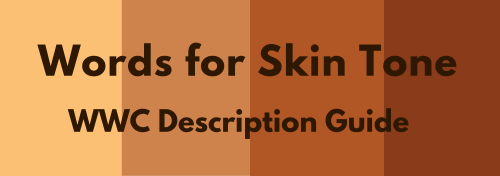
We discussed the issues describing People of Color by means of food in Part I of this guide, which brought rise to even more questions, mostly along the lines of “So, if food’s not an option, what can I use?” Well, I was just getting to that!
This final portion focuses on describing skin tone, with photo and passage examples provided throughout. I hope to cover everything from the use of straight-forward description to the more creatively-inclined, keeping in mind the questions we’ve received on this topic.
Standard Description
Basic Colors

Pictured above: Black, Brown, Beige, White, Pink.
“She had brown skin.”
This is a perfectly fine description that, while not providing the most detail, works well and will never become cliché.
Describing characters’ skin as simply brown or beige works on its own, though it’s not particularly telling just from the range in brown alone.
Complex Colors
These are more rarely used words that actually “mean” their color. Some of these have multiple meanings, so you’ll want to look into those to determine what other associations a word might have.

Pictured above: Umber, Sepia, Ochre, Russet, Terra-cotta, Gold, Tawny, Taupe, Khaki, Fawn.
Complex colors work well alone, though often pair well with a basic color in regards to narrowing down shade/tone.
For example: Golden brown, russet brown, tawny beige…
As some of these are on the “rare” side, sliding in a definition of the word within the sentence itself may help readers who are unfamiliar with the term visualize the color without seeking a dictionary.
“He was tall and slim, his skin a russet, reddish-brown.”
Comparisons to familiar colors or visuals are also helpful:
“His skin was an ochre color, much like the mellow-brown light that bathed the forest.”
Modifiers
Modifiers, often adjectives, make partial changes to a word.The following words are descriptors in reference to skin tone.
Dark - Deep - Rich - Cool
Warm - Medium - Tan
Fair - Light - Pale
Rich Black, Dark brown, Warm beige, Pale pink…
If you’re looking to get more specific than “brown,” modifiers narrow down shade further.
Keep in mind that these modifiers are not exactly colors.
As an already brown-skinned person, I get tan from a lot of sun and resultingly become a darker, deeper brown. I turn a pale, more yellow-brown in the winter.
While best used in combination with a color, I suppose words like “tan” “fair” and “light” do work alone; just note that tan is less likely to be taken for “naturally tan” and much more likely a tanned White person.
Calling someone “dark” as description on its own is offensive to some and also ambiguous. (See: Describing Skin as Dark)
Undertones
Undertones are the colors beneath the skin, seeing as skin isn’t just one even color but has more subdued tones within the dominating palette.
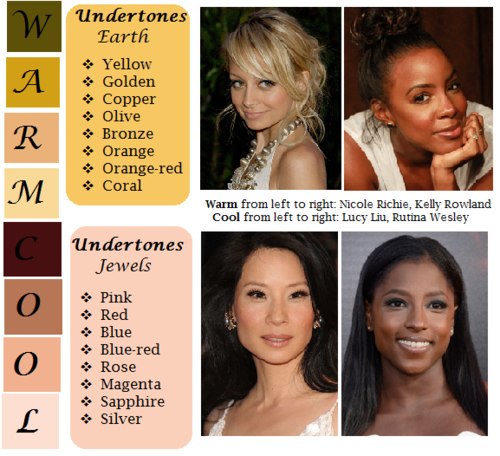
pictured above: warm / earth undertones: yellow, golden, copper, olive, bronze, orange, orange-red, coral | cool / jewel undertones: pink, red, blue, blue-red, rose, magenta, sapphire, silver.
Mentioning the undertones within a character’s skin is an even more precise way to denote skin tone.
As shown, there’s a difference between say, brown skin with warm orange-red undertones (Kelly Rowland) and brown skin with cool, jewel undertones (Rutina Wesley).
“A dazzling smile revealed the bronze glow at her cheeks.”
“He always looked as if he’d ran a mile, a constant tinge of pink under his tawny skin.”
Standard Description Passage
“Farah’s skin, always fawn, had burned and freckled under the summer’s sun. Even at the cusp of autumn, an uneven tan clung to her skin like burrs. So unlike the smooth, red-brown ochre of her mother, which the sun had richened to a blessing.”
-From my story “Where Summer Ends” featured in Strange Little Girls
Here the state of skin also gives insight on character.
Note my use of “fawn” in regards to multiple meaning and association. While fawn is a color, it’s also a small, timid deer, which describes this very traumatized character of mine perfectly.
Though I use standard descriptions of skin tone more in my writing, at the same time I’m no stranger to creative descriptions, and do enjoy the occasional artsy detail of a character.
Creative Description
Whether compared to night-cast rivers or day’s first light…I actually enjoy seeing Characters of Colors dressed in artful detail.
I’ve read loads of descriptions in my day of white characters and their “smooth rose-tinged ivory skin”, while the PoC, if there, are reduced to something from a candy bowl or a Starbucks drink, so to actually read of PoC described in lavish detail can be somewhat of a treat.
Still, be mindful when you get creative with your character descriptions. Too many frills can become purple-prose-like, so do what feels right for your writing when and where. Not every character or scene warrants a creative description, either. Especially if they’re not even a secondary character.
Using a combination of color descriptions from standard to creative is probably a better method than straight creative. But again, do what’s good for your tale.
Natural Settings - Sky

Pictured above: Harvest Moon -Twilight, Fall/Autumn Leaves, Clay, Desert/Sahara, Sunlight - Sunrise - Sunset - Afterglow - Dawn- Day- Daybreak, Field - Prairie - Wheat, Mountain/Cliff, Beach/Sand/Straw/Hay.
Now before you run off to compare your heroine’s skin to the harvest moon or a cliff side, think about the associations to your words.
When I think cliff, I think of jagged, perilous, rough. I hear sand and picture grainy, yet smooth. Calm. mellow.
So consider your character and what you see fit to compare them to.
Also consider whose perspective you’re describing them from. Someone describing a person they revere or admire may have a more pleasant, loftier description than someone who can’t stand the person.
“Her face was like the fire-gold glow of dawn, lifting my gaze, drawing me in.”
“She had a sandy complexion, smooth and tawny.”
Even creative descriptions tend to draw help from your standard words.
Flowers
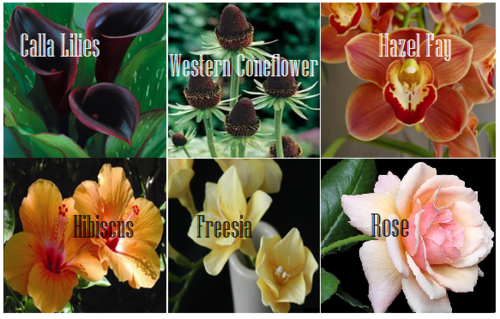
Pictured above: Calla lilies, Western Coneflower, Hazel Fay, Hibiscus, Freesia, Rose
It was a bit difficult to find flowers to my liking that didn’t have a 20 character name or wasn’t called something like “chocolate silk” so these are the finalists.
You’ll definitely want to avoid purple-prose here.
Also be aware of flowers that most might’ve never heard of. Roses are easy, as most know the look and coloring(s) of this plant. But Western coneflowers? Calla lilies? Maybe not so much.
“He entered the cottage in a huff, cheeks a blushing brown like the flowers Nana planted right under my window. Hazel Fay she called them, was it?”
Assorted Plants & Nature

Pictured above: Cattails, Seashell, Driftwood, Pinecone, Acorn, Amber
These ones are kinda odd. Perhaps because I’ve never seen these in comparison to skin tone, With the exception of amber.
At least they’re common enough that most may have an idea what you’re talking about at the mention of “pinecone."
I suggest reading out your sentences aloud to get a better feel of how it’ll sounds.
"Auburn hair swept past pointed ears, set around a face like an acorn both in shape and shade.”
I pictured some tree-dwelling being or person from a fantasy world in this example, which makes the comparison more appropriate.
I don’t suggest using a comparison just “cuz you can” but actually being thoughtful about what you’re comparing your character to and how it applies to your character and/or setting.
Wood

Pictured above: Mahogany, Walnut, Chestnut, Golden Oak, Ash
Wood can be an iffy description for skin tone. Not only due to several of them having “foody” terminology within their names, but again, associations.
Some people would prefer not to compare/be compared to wood at all, so get opinions, try it aloud, and make sure it’s appropriate to the character if you do use it.
“The old warlock’s skin was a deep shade of mahogany, his stare serious and firm as it held mine.”
Metals

Pictured above: Platinum, Copper, Brass, Gold, Bronze
Copper skin, brass-colored skin, golden skin…
I’ve even heard variations of these used before by comparison to an object of the same properties/coloring, such as penny for copper.
These also work well with modifiers.
“The dress of fine white silks popped against the deep bronze of her skin.”
Gemstones - Minerals
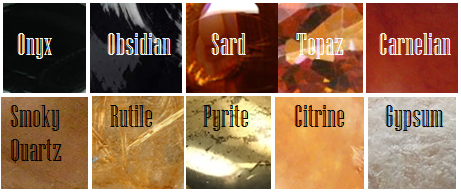
Pictured above: Onyx, Obsidian, Sard, Topaz, Carnelian, Smoky Quartz, Rutile, Pyrite, Citrine, Gypsum
These are trickier to use. As with some complex colors, the writer will have to get us to understand what most of these look like.
If you use these, or any more rare description, consider if it actually “fits” the book or scene.
Even if you’re able to get us to picture what “rutile” looks like, why are you using this description as opposed to something else? Have that answer for yourself.
“His skin reminded her of the topaz ring her father wore at his finger, a gleaming stone of brown, mellow facades.”
Physical Description
Physical character description can be more than skin tone.
Show us hair, eyes, noses, mouth, hands…body posture, body shape, skin texture… though not necessarily all of those nor at once.
Describing features also helps indicate race, especially if your character has some traits common within the race they are, such as afro hair to a Black character.
How comprehensive you decide to get is up to you. I wouldn’t overdo it and get specific to every mole and birthmark. Noting defining characteristics is good, though, like slightly spaced front teeth, curls that stay flopping in their face, hands freckled with sunspots…
General Tips
Indicate Race Early: I suggest indicators of race be made at the earliest convenience within the writing, with more hints threaded throughout here and there.
Get Creative On Your Own: Obviously, I couldn’t cover every proper color or comparison in which has been “approved” to use for your characters’ skin color, so it’s up to you to use discretion when seeking other ways and shades to describe skin tone.
Skin Color May Not Be Enough: Describing skin tone isn’t always enough to indicate someone’s ethnicity. As timeless cases with readers equating brown to “dark white” or something, more indicators of race may be needed.
Describe White characters and PoC Alike: You should describe the race and/or skin tone of your white characters just as you do your Characters of Color. If you don’t, you risk implying that White is the default human being and PoC are the “Other”).
PSA: Don’t use “Colored.” Based on some asks we’ve received using this word, I’d like to say that unless you or your character is a racist grandmama from the 1960s, do not call People of Color “colored” please.
Not Sure Where to Start? You really can’t go wrong using basic colors for your skin descriptions. It’s actually what many people prefer and works best for most writing. Personally, I tend to describe my characters using a combo of basic colors + modifiers, with mentions of undertones at times. I do like to veer into more creative descriptions on occasion.
Want some alternatives to “skin” or “skin color”? Try: Appearance, blend, blush, cast, coloring, complexion, flush, glow, hue, overtone, palette, pigmentation, rinse, shade, sheen, spectrum, tinge, tint, tone, undertone, value, wash.
Skin Tone Resources
List of Color Names
The Color Thesaurus
Skin Undertone & Color Matching
Tips and Words on Describing Skin
Photos: Undertones Described (Modifiers included)
Online Thesaurus (try colors, such as “red” & “brown”)
Don’t Call me Pastries: Creative Skin Tones w/ pics I
Writing & Description Guides
WWC Featured Description Posts
WWC Guide: Words to Describe Hair
Writing with Color: Description & Skin Color Tags
7 Offensive Mistakes Well-intentioned Writers Make
I tried to be as comprehensive as possible with this guide, but if you have a question regarding describing skin color that hasn’t been answered within part I or II of this guide, or have more questions after reading this post, feel free to ask!
~ Mod Colette
Becoming a writer is great because now you have a hobby that haunts you whenever you don’t have time to do it
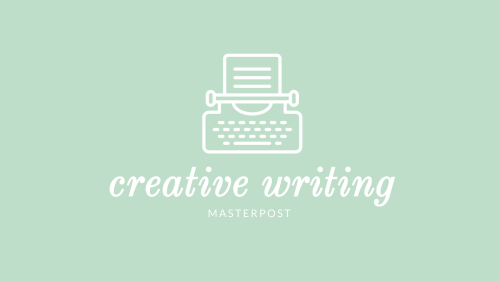
Hey guys! As a writer myself, it’s hard to have a lot of resources for writing in one place. That’s why I decided to create this masterpost, and maybe make more if I find future resources. I hope you like it, and expect to see more masterposts like this in the future!
Generators
Character
Appearance Generator
Archetypes Generator
Character Generator
Character Traits Generator
Family Generator
Job/Occupation Generator, (II)
Love Interest Generator
Motive Generator
Name Generator
Personality Generator, (II)
Quick Character Generator
Super Powers Generator
Names
Brand Name Generator
Medicine Title Generator
Name Generator
Quick Name Generator
Vehicle Generator
Town Name Generator
Plot
First Encounter Generator
First Line Generator, (II)
Plot Generator, (II), (III)
Plot Device Generator
Plot Twist Generator
Quick Plot Generator
Setting/World-Building
City Generator
Fantasy Race Generator
Laws Generator
Pet Generator
Setting Generator
Species Generator
Terrain Generator
Prompts
Subject Generator
”Take Three Nouns” Generator
Word Prompt Generator
Misc
Color Generator
Decision Generator
Dialogue Generator
Journey Generator
Title Generator, (II), (III)
Some Tips
Just a few I found from the writing tips tag!
Writing action / @berrybird
How to create a strong voice in your writing / @collegerefs
How to plot a complex novel in one day! / @lizard-is-writing
8 ways to get past writer’s block / @kiramartinauthor
psa for writers / @dasakuryo
”Write Using Your 5 Senses” / @ambientwriting
How People Watching Improves Your Writing / @wherethetransthingsare
Writing Science Fiction: Tips for Beginners / @fictionwritingtips
Creating Likeable Characters / @authors-haven
Vocabulary
Descriptive words / @somekindofstudent
Words to replace “Said” / @msocasey
Obscure color words / @mintsteelpeachlilac
Words to spice up your stories / @busyibee
Words to describe someone’s voice
Words to Use Instead of Very / @gaybybirth
Touchy Feely Words / @gaybybirth
Some Advice
Stephen King’s Top 20 Rules for Writers
”But my plot isn’t UNIQUE or BIG enough!” / @youreallwrite
8 Things Every Creative Should Know / @adamjk
(How To) Get Over Comparing Yourself to Other Creatives / @adamjk
How to Get Over Common Creative Fears (Maybe) / @adamjk
14 Tips From Stephen King On Writing / @i-can-give-you-prompts
Playlists
Electronic Thoughts / @eruditekid
“Mix About Writing” An Instrumental Mix / @shadowofemirates
Shut Up, I’m Writing! / @ninadropdead
Chill / @endlessreveries
Breathtaking Film Scores / @tweedskirts
Music to Write to Vol. 1: Starlight / @crestadeen
Music for Written Words / @ghoulpatch
Dead Men Tell No Tales / @scamandersnewt
Fatale / @dolcegf
All These Things that I’ve Done / @referenceforwriters
Feeling Soaking into Your Bones / @verylondon
I Can Feel Your Pulse in the Pages / @rphelper
Morally Ambiguous / @scamandersnewt
Wonderwall / @wheelerwrites
Pythia / @mazikeene
Ballet: To Dance / @tanaquil
Websites and Apps
For Writing
ZenPen: A minimalist writing website to keep you free of distractions and in the flow.
The Most Dangerous Writing App: A website where you have to keep typing or all of your writing will be lost. It helps you keep writing…kind of. You can choose between a time or word count limit!
Evernote: An online website where you can take notes and save the product to your laptop and/or smartphone!
Writer, the Internet Typewriter: It’s just you and your writing, and you can save your product on the website if you create an account.
Wordcounter: A website to help check your word and character count, and shows words you’re using frequently.
Monospace: An Android app for writing on the go when you feel the inspiration, but you don’t have your laptop on you!
For Productivity
Tide: An app that combines a pomodoro-esque timer with nature sounds and other noises! (Google Play / Apple Store)
ClearFocus: An Android app with a pomodoro-type time counter to let you concentrate easier and stay productive.
Forest: An app with a time counter to keep you focused and off your phone, and when you complete the time limit, a tree grows in your garden! (Google Play / Apple Store)
SelfControl: A Mac downloadable app that blocks you from distracting mail servers, websites, and other things!
Prompt Blogs
@writeworld
@dialouge-prompts
@oopsprompts
@prompts-for-the-otp
@creativepromptsforwriting
@the-modern-typewriter
@theprofessionalpromptmaker
@writers-are-writers
@otp-imagines-cult
@witterprompts
@havetobememes
@auideas
@putthepromptsonpaper
@promptsonpaper
@fyotpprompts
@otpisms
@soprompt
@otpprompts
@ablockforwritersblock
@awritersnook
Writing Tips Blogs
@writeworld
@anomalously-written
@awritersnook
@clevergirlhelps
@referenceforwriters
@whataboutwriting
@thewritershelpers
@nimblesnotebook
@slitheringink

30 days of writing prompts based on your music playlist!
Click shuffle three times
A song that always makes you cry
A song that reminds you of someone you hate
The last song you listened to
Your go-to sing along song
A song you always sing in the shower
Click shuffle twice
A song recommended by a friend
A song you hate but can’t take off your playlist
A song from a movie / TV show
Click shuffle four times
A mix of the first and last song on your playlist
A song with a blue album cover
A song starting with an f
A song that you always skip
A song with a colour in the title
A song that’s older than you
A song that used to be your favourite
Click shuffle seven times
A song that makes you believe in love
A song that makes you believe that love is dead
Click shuffle twice and skip three songs
A song with a pink album cover
Your least favourite song from your favourite album
A song with the word fun in the title
A hopeful duet
A song about friendship
A song that you’d play at a party
A song that you’d play at a wedding
Your favourite song
Also see:
Writing Challenges / 30 Day Writing Challenges
Prompts masterlist
As you write, you will naturally improve. Do not wait until you think you are good enough to start. You are always good enough to start improving.
writing fanfiction is just fingers clenching over a keyboard as you ferally mutter i just want this little guy to be held, damn it and proceeding to hurt said little guy (gn) for about 10k words before you actually give them their hug
gestures that makes me feel love:
(feel free to use the<33 2, 5,6, and 17 are lengg, do tag me when yall writee :) )
when they feed you the first bite
when they hug you from the back and wants to stay like that for a bit, it's just so comforting and healing!!!
staying away past their bed time, waiting for you to finish your work
slow dancing in the living room. with pjs.
knuckle kisses. SHOULDER KISSES. OKAY?? UGH♡
when they have a habit of bumping noses with you, that makes you giggle a little
always smiling in your presence :')
^ "how are you so smiling so hard right now?" "i find myself a little bit more happy when I'm with you. :)"
when they tuck a strand of your hair behind your ear while you talk
when they defend you in your absence
reaching out to hold your hands, always
keenly listens to you rant and vice versa
always so good with kids, and kids absolutely love them!!
sends you pictures and videos often and tells you how much they wish you were there with them
makes time for you. absolutely loves spending time with you!
lying in silence while cuddling snd realising how much their touch comforts you
shamelessly gets back rubs from you (if ure at that level, yall prolly should get married)
teases you on every occasion possible!
"If multi-verse exists, I hope to god, you're my soulmate in every one of them."
when they press kisses at the corners your lips. always.
-
 covenawhite66 liked this · 4 months ago
covenawhite66 liked this · 4 months ago -
 lovespiralls reblogged this · 4 months ago
lovespiralls reblogged this · 4 months ago -
 stonerfagdragonboy liked this · 6 months ago
stonerfagdragonboy liked this · 6 months ago -
 s-h-y-y-a-n-n-e liked this · 7 months ago
s-h-y-y-a-n-n-e liked this · 7 months ago -
 nikilaudas liked this · 8 months ago
nikilaudas liked this · 8 months ago -
 f1-princess liked this · 8 months ago
f1-princess liked this · 8 months ago -
 aflowerofwords reblogged this · 8 months ago
aflowerofwords reblogged this · 8 months ago -
 aflowerofwords liked this · 8 months ago
aflowerofwords liked this · 8 months ago -
 hymnsandarias reblogged this · 8 months ago
hymnsandarias reblogged this · 8 months ago -
 game-set-canet reblogged this · 8 months ago
game-set-canet reblogged this · 8 months ago -
 meaname123 liked this · 11 months ago
meaname123 liked this · 11 months ago -
 unlikelytalezombie liked this · 11 months ago
unlikelytalezombie liked this · 11 months ago -
 blueberrypie20 liked this · 1 year ago
blueberrypie20 liked this · 1 year ago -
 nicolegm15 liked this · 1 year ago
nicolegm15 liked this · 1 year ago -
 pellpinezz liked this · 1 year ago
pellpinezz liked this · 1 year ago -
 p-3-ngu-1-n reblogged this · 1 year ago
p-3-ngu-1-n reblogged this · 1 year ago -
 just-your-average-cryptid liked this · 1 year ago
just-your-average-cryptid liked this · 1 year ago -
 authorisada liked this · 1 year ago
authorisada liked this · 1 year ago -
 anipwrites reblogged this · 1 year ago
anipwrites reblogged this · 1 year ago -
 anipwrites liked this · 1 year ago
anipwrites liked this · 1 year ago -
 trailcoyote liked this · 1 year ago
trailcoyote liked this · 1 year ago -
 anunsungcarol liked this · 1 year ago
anunsungcarol liked this · 1 year ago -
 inara-sensei reblogged this · 1 year ago
inara-sensei reblogged this · 1 year ago -
 mercyacoustic liked this · 1 year ago
mercyacoustic liked this · 1 year ago -
 girlofthunder reblogged this · 1 year ago
girlofthunder reblogged this · 1 year ago -
 nothingweirdhere liked this · 1 year ago
nothingweirdhere liked this · 1 year ago -
 lady-redshield-writes reblogged this · 1 year ago
lady-redshield-writes reblogged this · 1 year ago -
 phoenixmakeswords reblogged this · 1 year ago
phoenixmakeswords reblogged this · 1 year ago -
 raiswanson reblogged this · 1 year ago
raiswanson reblogged this · 1 year ago -
 randomcat84 liked this · 1 year ago
randomcat84 liked this · 1 year ago -
 hearttoone liked this · 1 year ago
hearttoone liked this · 1 year ago -
 thetiredmonarch reblogged this · 1 year ago
thetiredmonarch reblogged this · 1 year ago -
 thetiredmonarch liked this · 1 year ago
thetiredmonarch liked this · 1 year ago -
 aydanpotter liked this · 1 year ago
aydanpotter liked this · 1 year ago -
 tigerkatzz liked this · 1 year ago
tigerkatzz liked this · 1 year ago -
 k3wi liked this · 1 year ago
k3wi liked this · 1 year ago -
 calsburrito liked this · 1 year ago
calsburrito liked this · 1 year ago -
 museofthenight98 liked this · 1 year ago
museofthenight98 liked this · 1 year ago -
 rockandtoon liked this · 1 year ago
rockandtoon liked this · 1 year ago -
 lcc-ldv liked this · 1 year ago
lcc-ldv liked this · 1 year ago -
 alyson-mae-sweetheart3 reblogged this · 1 year ago
alyson-mae-sweetheart3 reblogged this · 1 year ago -
 iwlam liked this · 1 year ago
iwlam liked this · 1 year ago -
 moonysashes liked this · 1 year ago
moonysashes liked this · 1 year ago -
 moomkin77 liked this · 1 year ago
moomkin77 liked this · 1 year ago




